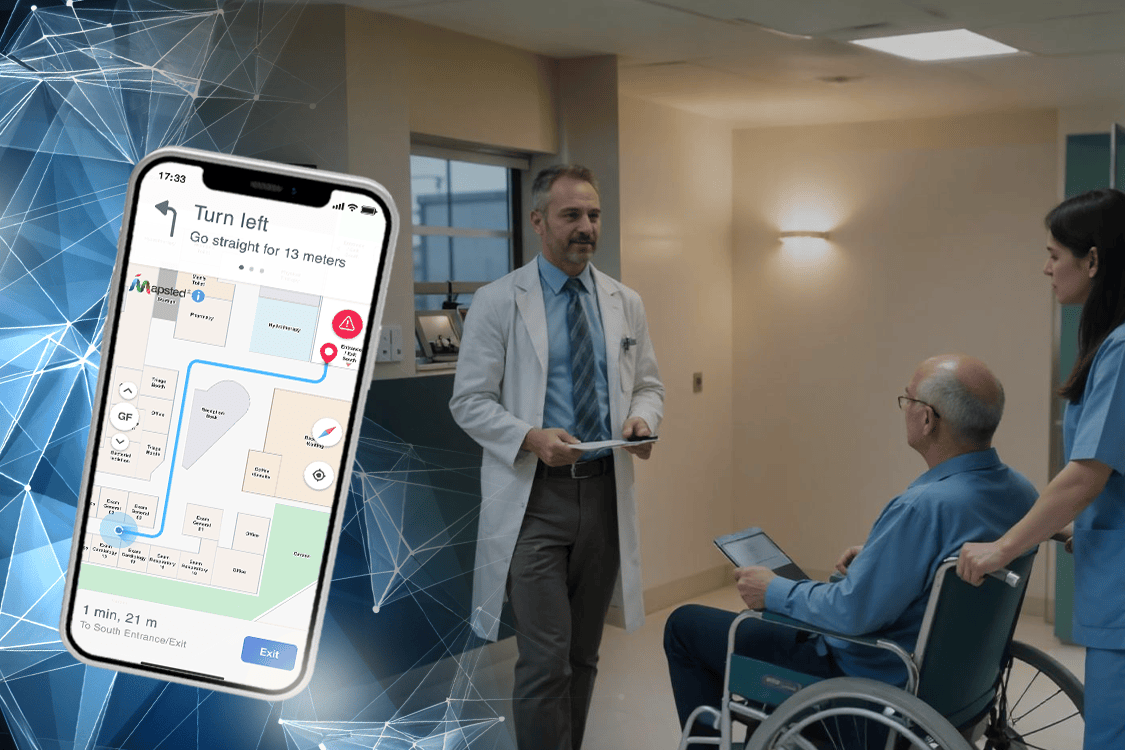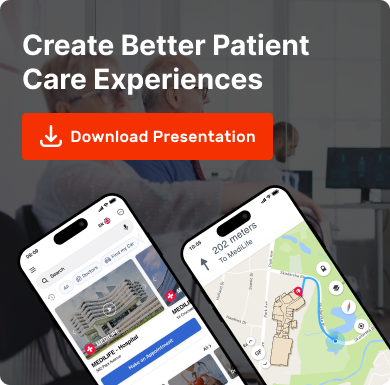Hospitals & Healthcare

No one enjoys waiting, especially at a hospital. “When someone comes through those doors, one thing we know is they’re generally already under duress, whether it’s physical or emotional.” Add a long wait to that mix and it can easily become an exercise in frustration for patients and staff alike. That’s where the optimization of patient flow management comes into play.
It’s not a buzzword. It’s a very real, very practical answer to a problem that almost every hospital faces: how to get people the care they need sooner.
But there is no need to leap toward elaborate theories. This is a matter of solid, tactical patient flow management solutions. A solution that contains right tools — to avoid standard delays, deliver better care and make the lives of all inside your hospital a whole lot easier.


Let’s Start with the Real Problem
If you run a healthcare facility, then you know how quickly things get backed up and how it impacts healthcare efficiency:
- Appointments are delayed.
- The emergency room fills up.
- Staff members feel stretched.
- A patient becomes agitated and writes a bad review.
Sometimes, it’s not even a question of the number of patients, but how they flow — or don’t flow — through your building.
There’s a journey for every patient, from the entry point to the reception to the waiting room, to diagnostics, consultation and discharge, whether they’re here for a quick check-up or an emergency visit. If there is any friction on this journey, it ripples through the system.
That’s where the benefits of optimizing patient flow begin to matter.
So, What Does Patient Flow Optimization Really Mean?
So, in other words, it’s about making every aspect of a patient’s visit — from the stage when they walk in the door to the stage when they walk out of the door — as seamless, speedy and efficient as possible.” This includes:
- Reducing bottlenecks at check-in.
- Ensuring that patients are not left in limbo about the next steps.
- Practice the routine of staff scheduling based on patient volume.
- Giving a live view of who’s where and who’s next.
When done right, it means quicker service , happier patients and a more efficient hospital.
Let’s Talk Tech—But Keep It Practical
You don’t need to rebuild your whole system to kick off optimizing for patient experience improvement. Even small technological advances can have a huge impact.
Mapsted is doing some smart work along these lines and here’s how you can deploy similar tech in the real world:
- Geofencing, You get a notification as soon as someone enters a particular area in your hospital. You can say hello, communicate wait times or give them directions—all on autopilot.
- Indoor Wayfinding, Building GPS Diagnostics can direct a patient step by step back through the hospital to pay a bill — or even search for the cafeteria.
- LIFT Labs Access, Labs and ICUs are dangerous places that need smart entry control. No need to be concerned about anyone walking in on a sensitive situation.
- “Where’s My Car?” After a long day, the location of where you parked shouldn’t be a question. This feature helps individuals find their parked car in no time.
- Relevant Offers: Time-relevant promos will be shown to current walk-ins into your in-house pharmacy or wellness center at the right place (on the premises) at the right time.
Not only do these features improve the patient experience—they give your team more control and seek to eliminate friction at unnecessary touchpoints that can take longer than they need to.
How It All Helps with Wait Time Reduction
Now, let’s loop back to the goal, which was reducing patient wait times. You can have visibility of real-time movement and intent to:
- Speedier check-ins: Geofencing lets you know someone’s in the building before they hit the desk.
- Automate direction finding: If fewer people are asking each other for directions, the flow will be better.
- Get that next step lined up sooner: Done with blood work? Call the consultation department to get all prepared.
- Immediately reconfigure staff: Given that more patients are being brought into radiology, rescale staff to balance the load.
Every step works to alleviate the friction. And when friction is eliminated, time is generated.
Real Stats That Prove It Works
If you’re curious whether patient flow optimization matters, here are some real numbers from published case studies:
✅In this case study, St. Vincent’s Medical Center saw:
- 16% reduction in emergency department length of stay for admitted patients
- 19% decrease in ED length-of-stay among discharged patients.
- The percentage of cases Left Without Treatment reduced from 3.9% to just 0.6%.
- Time to clinician was reduced by 53%.
✅ An analysis of digital triage tools found that:
- This reduced a patient’s wait time by an average of 2.5 minutes or 26 percent.
- A 54.88% decrease with only 5 minutes per patient saved.
✅ In one report, a patient’s time in a health care facility is spent waiting rather than receiving care 74 percent of the time.
What Hospitals Around the World Are Doing
If you are wondering what is patient flow optimization? Then let’s see how some of the most forward-thinking healthcare systems in the U.S. as well as Australia and the UAE, are leveraging predictive analytics, queue management systems and real-time alerts to help manage patient flow more effectively.
Some use live updates on waiting room screens or send texts that inform patients exactly when they will see someone. It’s small stuff — but patients like it and so do the staff.
They’re also using real-time dashboards to forecast when they will be busiest and schedule staff accordingly. One hospital in Sydney reduced peak-hour wait times by 25% by simply using predictive analytics to better schedule nurses in advance.
Why It Matters More Than You Think
You’re not only cutting time. You’re improving care. And protecting your hospital’s reputation.
Prolonged waits not only annoy patients — they erode trust. Research suggests that 34% of patients are likely to switch providers following a single negative experience involving delays. You also save money.
Less wasted time means:
- Better resource utilization.
- Fewer missed appointments.
- Lower stress for staff.
- Less chaos in emergencies.
And when your staff is less frazzled and better coordinated, they do better work — which results in better outcomes for patients.
Some Quick Wins You Can Aim For
- Reduced average wait times by 30–40% with intelligent scheduling & wayfinding leading to better hospital workflow management.
- Have an easier process, leading to better patient retention.
- Increase your facility’s reputation, resulting in better Google reviews and word of mouth.
- And provide staff with breathing room so they can spend more time on care and less time on firefighting.
Final Thoughts: You Don’t Need to Wait to Fix the Waiting
Improving wait times doesn’t require a million-dollar fix. Start with what you have for patient flow management. Add in the right tech tools—geofencing, indoor mapping, automated alerts—and tackle one area at a time.
The trick is to remain aware and responsive and to use the data wisely.
When hospitals do a good job of managing patient flow, it shows. Patients notice it. Staff feels the difference. And your operations simply… work.
So here’s a question for you: Are people waiting longer than they need to in your hospital? If so, now’s your opportunity to address that. Because when patients go faster, they get better care. And when care improves, everything else improves as well. If you found this blog helpful, please read our blog on “How Improving Patient Satisfaction Can Boost Your Hospital’s Revenue” or watch our video on Transform Patient Care and Healthcare Facility Efficiencies With Location-Based Technology to learn more.
Frequently Asked Questions
Q1. What is patient flow optimization?
Ans. It’s making the process of how patients flow through your facility — from check-in to discharge — more efficient to eliminate wait times and enhance care.
Q2. How does geofencing help reduce hospital wait times?
Ans. Geofencing alerts staff when patients enter the designated zone, enabling faster check-ins, more efficient coordination and real-time communications.
Q3. Can indoor wayfinding really make a difference?
Ans. Yes, it allows patients to navigate without having to stop and ask for directions; the flow continues and there are fewer bottlenecks.
Q4. What tools are hospitals using to manage patient flow?
Ans. Digital check-ins, real-time dashboards, predictive scheduling, geofencing and indoor navigation tools all allow hospitals to run more efficiently.
Q5. How much can wait times be reduced with better flow?
Ans. Using the right tools, hospitals have reported decreasing wait times by 20–50% depending on what changes have been made and how well they’ve been implemented.
